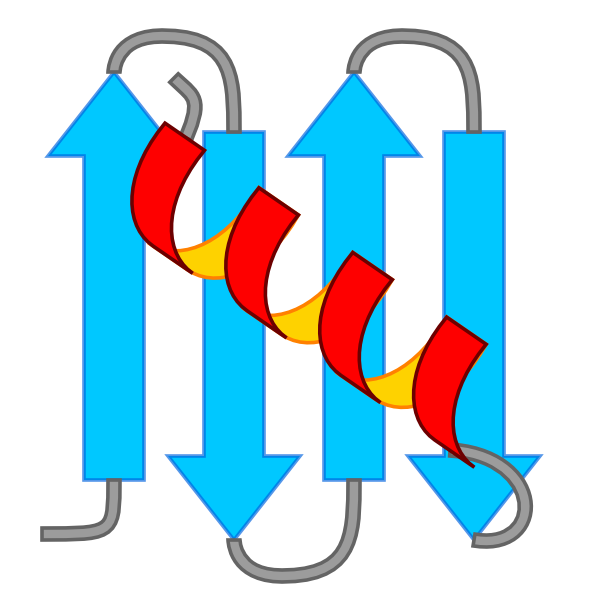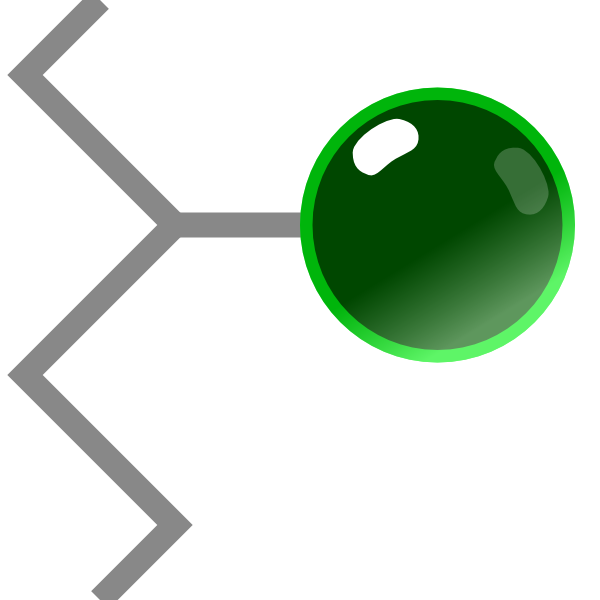
Next: Interatomic data containers Up: The data model Previous: The relax data store Contents Index
Within a data pipe is the molecule, residue, and spin container data structure. Data which is specific to a given nucleus is stored in a special spin container structure. This includes relaxation data, model-free parameters, reduced spectral density mapping values, spin specific optimisation parameters, chemical shift tensor information, pseudo-contact shift values, etc. The spin containers can be created from 3D structural data or a sequence file, as described in the next two sections, or manually built.

The spin containers are part of a nested set of containers, and are graphically depicted in the spin viewer window of the GUI in figure 1.10 on page ![[*]](crossref.png) .
As can be seen from the figure, the top level holds a single molecular container.
Multiple molecular containers can be present if the study is of a molecular complex.
Using the GUI menus or the prompt/scripting mode, molecule containers can be manually created with the user function:
.
As can be seen from the figure, the top level holds a single molecular container.
Multiple molecular containers can be present if the study is of a molecular complex.
Using the GUI menus or the prompt/scripting mode, molecule containers can be manually created with the user function:
molecule.create(mol_name='glycerol', mol_type='organic molecule')
In the spin viewer window of the GUI, right clicking on the “Spin system information” element will pop up a menu with an entry for adding molecule containers. Right clicking on molecule containers will show a pop up menu with an entry for permanently deleting the container.

Nested within the molecule containers are residue containers.
These are graphically depicted in the spin viewer window (see figure 1.10 on page ![[*]](crossref.png) ).
Each molecule container can possess multiple residues.
These require either a unique residue number or unique residue name.
For organic molecules where the residue concept is meaningless, all spin containers can be held within a single unnamed and unnumbered residue container.
Using the GUI menus or the prompt/scripting mode, residue containers can be manually created with the user function:
).
Each molecule container can possess multiple residues.
These require either a unique residue number or unique residue name.
For organic molecules where the residue concept is meaningless, all spin containers can be held within a single unnamed and unnumbered residue container.
Using the GUI menus or the prompt/scripting mode, residue containers can be manually created with the user function:
residue.create(res_num='-5', res_name='ASP')
Alternatively residues can be added in the spin viewer window from the pop up menu when right clicking on molecule containers, and can be deleted via the pop up menu when right clicking on the residue to delete.

Spin containers are nested within a residue container (again graphically depicted in the spin viewer window in figure 1.10 on page ![[*]](crossref.png) ).
Multiple spin containers can exist per residue.
This allows, for example, a single model-free analysis simultaneously on the backbone nitrogen spins, side-chain tryptophan indole nitrogen spins and alpha carbon spins.
Or, for example, studying the pseudocontact shifts for all nitrogen, carbon and proton spins in the molecule simultaneously.
).
Multiple spin containers can exist per residue.
This allows, for example, a single model-free analysis simultaneously on the backbone nitrogen spins, side-chain tryptophan indole nitrogen spins and alpha carbon spins.
Or, for example, studying the pseudocontact shifts for all nitrogen, carbon and proton spins in the molecule simultaneously.
Spin containers can be manually added via the spin.create user function in the GUI or prompt/scripting mode:
spin.create(spin_num='200', spin_name='NE1')
The spin viewer window can also be used by right clicking on residue containers.
Spins are often identified in relax using their ID strings. The spin ID strings follow the basic construct found in a number of other NMR software such as MOLMOL. The identification string is composed of three components:
Each token can be composed of multiple elements - one per spin - separated by the “,” character and each individual element can either be a number (which must be an integer, in string format), a name, or a range of numbers separated by the “-” character. Negative numbers are supported. The full ID string specification is “#<mol_name> :<res_id>[, <res_id>[, <res_id>, ...]] @<atom_id>[, <atom_id>[, <atom_id>, ...]]”, where the token elements are “<mol_name>”, the name of the molecule, “<res_id>”, the residue identifier which can be a number, name, or range of numbers, “<atom_id>”, the atom or spin system identifier which can be a number, name, or range of numbers.
If one of the tokens is left out then all elements will be assumed to match. For example if the string does not contain the “#” character then all molecules will match the string. If only the molecule ID component is specified, then all spins of the molecule will match.
Regular expression can, in some instances, be used to select spins. For example the string “@H*” will select the protons `H', `H2' and `H98'.
The relax user manual (PDF), created 2024-06-08.